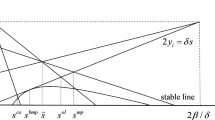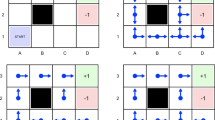Abstract
In this paper we consider the solution of large-scale market equilibrium problems with linear transaction costs which can be formulated as strictly convex quadratic programming problems, subject to supply and demand constraints. In particular, we introduce two new classes of progressive equilibration algorithms, which retain the simplicity of the original cyclic ones in that at each step either the supply or demand market equilibrium subproblem can be solved explicitly in closed form. However, rather than equilibrating the markets in cyclic manner, the next market to be equilibrated is selected in a more strategic fashion.
We then provide qualitative results for the entire family of progressive equilibration algorithms, i.e., the rate of convergence and computational complexity. We discuss implementation issues and give computational results for large-scale examples in order to illustrate and give insights into the theoretical analysis. Furthermore, we show that one of the new classes of algorithms, the ‘good-enough’ one, is computationally the most efficient. Theoretical results are important in that the relative efficiency of different algorithms need no longer be language, machine, or programmer dependent. Instead, the theory can guide both practitioners and researchers in ensuring that their implementation of these algorithms is, indeed, good.
Since an equivalent quadratic programming problem arises in a certain class of constrained matrix problems, our results can be applied there, as well. Finally, since more general asymmetric multicommodity market equilibrium problems can be solved as series of the type of problems considered here, the result$ are also applicable to such equilibrium problems.
Similar content being viewed by others
References
Asmuth, R., Eaves, B.C., and Peterson, E.L. (1979), Computing economic equilibria on affine networks with Lemke's algorithm, Mathematics of Operations Research 4, 209–214.
Dafermos, S. (1986), Isomorphic multiclass spatial price and multimodal traffic network equilibrium models, Regional Science and Urban Economics 16, 197–209.
Defermos, S. and Nagurney, A. (1987), Supply and demand equilibration algorithms for a class of market equilibrium problems, forthcoming in Transportation Science.
Florian, M. and Los, M. (1982), A new look at static spatial price equilibrium models, Regional Science and Urban Economics 12, 579–597.
Glassey, C.R. (1978), A quadratic network optimization model for equilibrium single commodity trade flows, Mathematical Programming 14, 98–107.
Güder, F. (1987), Pairwise reactive SOR algorithm for quadratic programming of net import spatial equilibrium models, forthcoming in Mathematical Programming.
Jones, P.C., Saigal, R., and Schneider, M.H. (1986), A variable dimension homotopy on networks for computing linear spatial equilibria, Discrete Applied Mathematics 13, 131–156.
Judge, G.G., and T. Takayama (1973), Studies in Economic Planning over Space and Time, North Holland Publishing Co.
Nagurney, A. (1987a), An algorithm for the classical spatial price equilibrium problem, Operations Research Letters 6(2), 93–98.
Nagurney, A. (1987b), Computational comparisons of spatial price equilibrium methods, Journal of Regional Science 27, 55–76.
Nagurney, A. (1987c), Competitive equilibrium problems, variational inequalities, and regional science, Journal of Regional Science 27, 503–514.
Nagurney, A. (1988a) An algorithm for the solution of a quadratic programming problem with application to constrained matrix and spatial price equilibrium problems, Environment & Planning A in press.
Nagurney, A. (1988b), Import and export equilibration algorithms for the solution of the net import model, Journal of Cost Analysis in press.
Nagurney, A. and Aronson, J. (1988), A general dynamic spatial price equilibrium model: formulation, solution, and computational results, Journal of Computational and Applied Mathematics 359–377.
Nagurney, A. and Kim, D.S. (1988), Parallel and serial variational inequality decomposition algorithms for multicommodity market equilibrium problems, The International Journal of Supercomputer Applications in press.
Press, W.H., Flannery, B.H., Teukolsky, S.A., and Vetterling, W.T. (1986), Numerical Recipes, Cambridge University Press.
Samuelson, P.A. (1952), Spatial price equilibrium and linear programming, American Economic Review 42, 283–303.
Takayama, T. and Judge, G.G. (1971), Spatial and Temporal Price and Allocation Models, North-Holland, Amsterdam.
Zangwill, W.I. (1969), Nonlinear Programming — A Unified Approach, Prentice Hall.
Author information
Authors and Affiliations
Rights and permissions
About this article
Cite this article
Eydeland, A., Nagurney, A. Progressive equilibration algorithms: The case of linear transaction costs. Computer Science in Economics and Management 2, 197–219 (1989). https://doi.org/10.1007/BF00436510
Issue Date:
DOI: https://doi.org/10.1007/BF00436510




